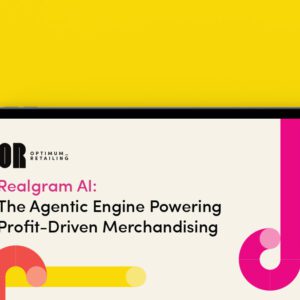By Jonathan
Cherki, ContentSquare

The benchmark for digital experience is constantly shifting, as a
new generation of disruptors compete for uniqueness while simultaneously
raising the bar on convenience. As a result, consumers have grown addicted to
exceptional online journeys, and developed a low tolerance for sites and apps
that don’t help them achieve their digital goals quickly and painlessly.
The good news for retailers is that consumer behavior analytics
are rising to meet the digital experience challenge. Teams today can equip themselves
with the tools they need to understand why consumers behave the way they do
online, and shape their experience development strategy around deep,
data-driven insights.
And while some consumer values like seamlessness and time-saving
are universal, a one-size-fits-all approach is just not going to cut it.
Today’s users want experiences that speak to their personal objectives and
immediate circumstances.
Take intent. Understanding consumer intent helps brands gauge
whether their platforms are helping consumers achieve their goals — whatever
those goals may be. And while sales is one measure of online success, as a
unique approach it’s flawed because it removes the option of rating successful
experiences that do not result in a purchase.
Trying to sell at all cost to someone seeking inspiration or
wanting to build a wish list will only lead to frustration. A smarter method is
to anticipate the unique needs of window shoppers or customers who prefer to
convert in-store at a later date, so you can also cater to these segments.
Creating a member account, signing up for newsletters, accessing
the store locator or simply deepening your connection with a brand by viewing
products and inspirational content are all great outcomes of a good digital
experience — purchase conversion is not the only KPI worth tracking.
The same is true of context. Device, time of day, acquisition
source and Internet speed will all impact digital behavior, and add a layer of
definition to a user’s demands and expectations. Developing journeys that
remain relevant whatever the context is key to nurturing your audience in the
long-run.
This is where smart analytics come in. By zooming in on the
nuances of digital behavior, which is essentially responsive and emotional,
analytics can add a deep and highly actionable layer of customer understanding
to segments.
People tend to make decisions driven by emotions, and then justify
them rationally. The word “experience” is itself indissoluble from the idea of
feeling.
Up until now, businesses could tell where their users dropped off,
but not what caused them to abandon their navigation. Thanks to AI, there is
now a way to read the emotions of digital consumers and turn these findings
into insights that will guide optimization efforts.
Being able to anticipate the patterns of behavior generated by
user emotions can only result in a better connection between brands and their
customers.
But what is the point of demystifying consumer behavior if it
takes a team of experts and a precious resource like time to translate the
findings into recommendations? More good news.
The biggest game-changer for brands is that today’s analytics have
come of age in the era of transparency, and some solution developers have
understood that the old model of ‘one leader, many executors’ is not as
efficient as empowering the entire team.
In the same way that consumers have raised their standards for
experience, digital teams have become more demanding with their analytics, and
no longer want to depend on data gatekeepers. Thanks to sophisticated
attribution models and innovative visualization methods, even non-data analysts
can measure the impact of their actions on their company’s overall revenue
goals.
AI also is becoming a key player in the experience game, driving
speed to insight and helping businesses revolutionize their workflow while
setting ever-higher targets for themselves.
Retailers and SaaS companies are disrupting hand in hand, and
ultimately, the biggest disruption starts and ends with people. By putting
consumers and the teams that create digital paths for them at the heart of
innovation, both sectors are pushing the boundaries for experience, and
transforming the retail ecosystem as we know it.
Jonathan Cherki is CEO
of ContentSquare.
Passionate about numbers and statistics, he founded the company in 2012
and has since served as the CEO, growing the company exponentially and
promoting the importance of UX to optimize the customer journey. Cherki is
committed to change the way companies work by creating a data-driven culture
for everyone. ContentSquare helps businesses understand how and why users are
behaving on digital platforms, and then uses this information to improve
conversion rates and create ideal customer journeys.






